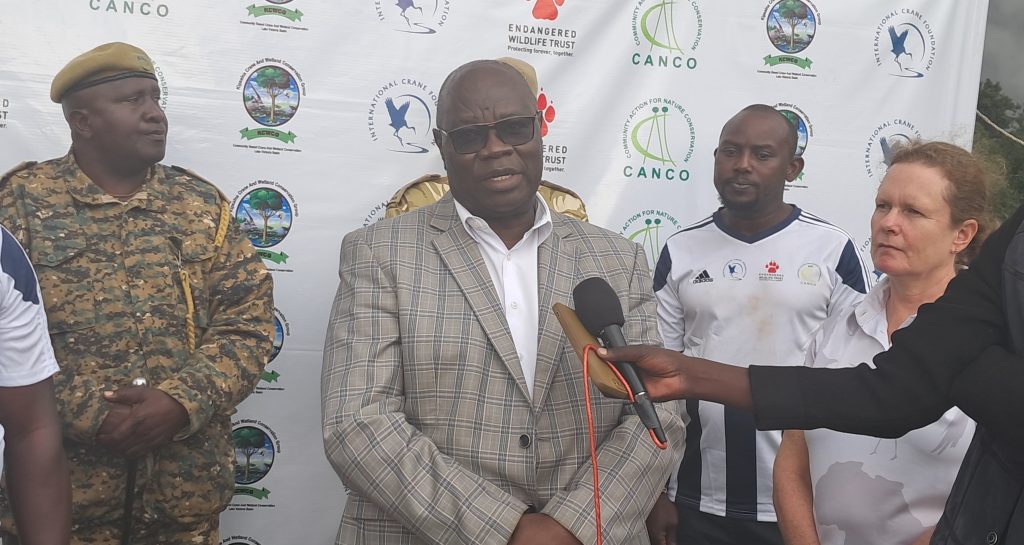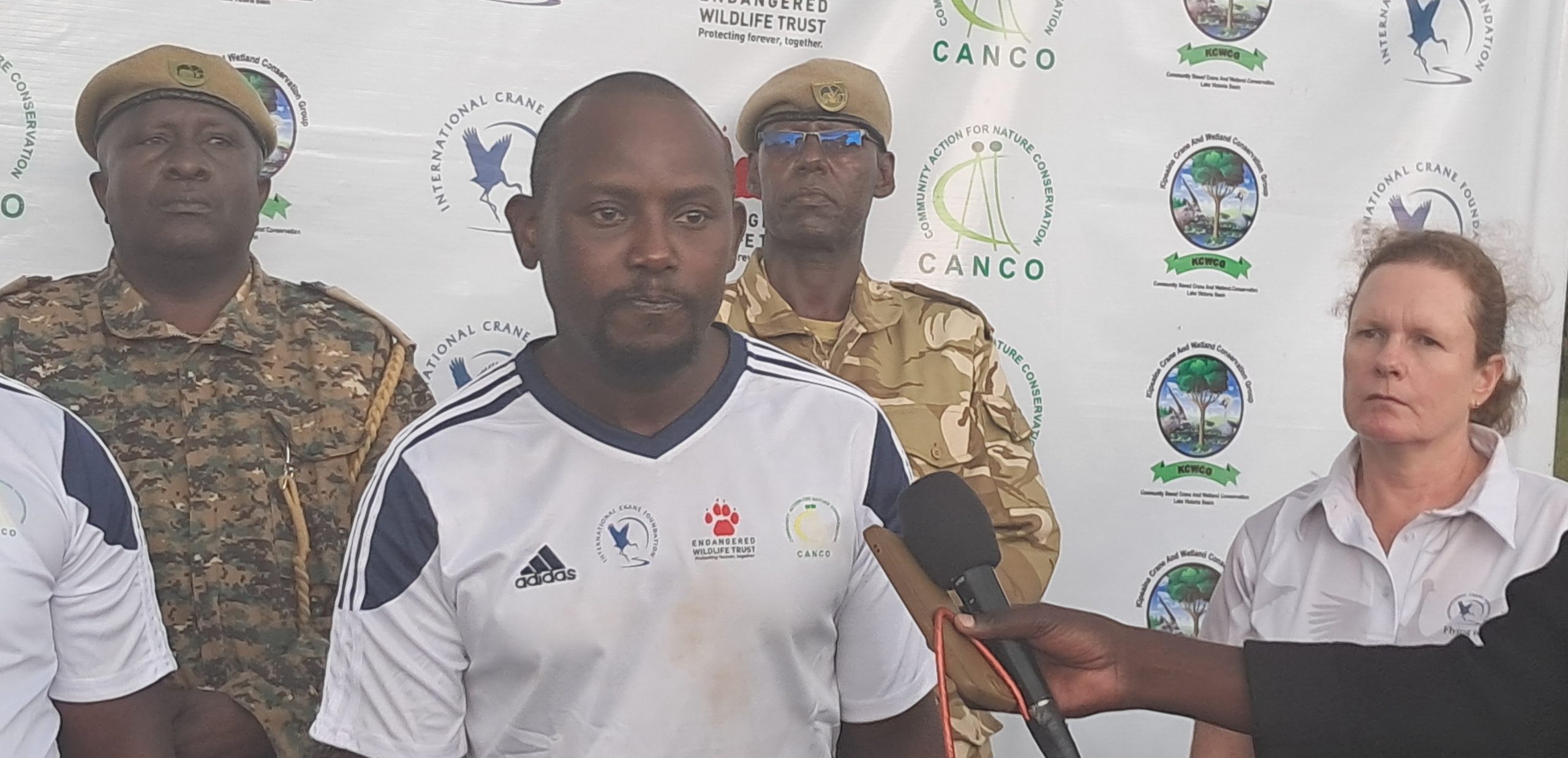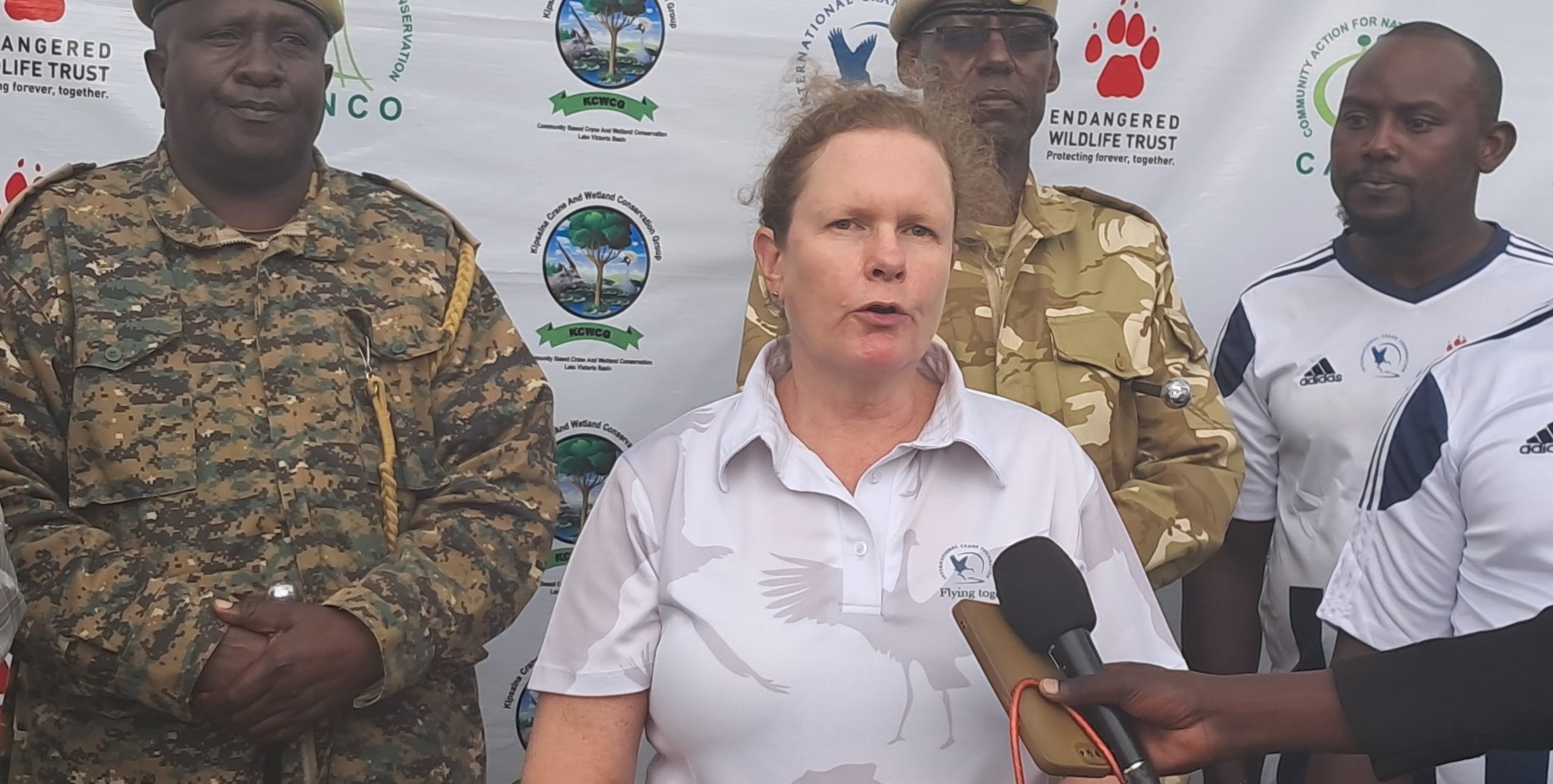Kenya Crane Festival Highlights Critical Need for Wetland Conservation and Crane Preservation

The Kenya Crane Festival, celebrated at Moi Marula Primary School in Eldoret, Uasin Gishu County, underscored the urgent need for crane and wetland conservation. The festival brought together environmental experts, local government officials, conservation enthusiasts, and community members to raise awareness about the endangered status of the East African Grey Crane and the essential role wetlands play in their survival.
Philip Raburu from the University of Eldoret who was the chief guest and, oversees research and extension issues, emphasized the festival’s importance. “It’s essential to celebrate the Kenya Crane Festival and discuss cranes because these species are crucial not only in Africa but also in Asia and America. Cranes are symbolized on many national flags and signify beauty,” Raburu stated. He stressed the urgency of protecting crane habitats, particularly wetlands, which are being destroyed, leading to a decline in crane populations.
Raburu highlighted research conducted by the University of Eldoret, revealing that wetlands in Uasin Gishu are heavily polluted and inadequately protected. “The Marula wetlands are burnt almost every year due to a lack of protection, and pollution is rampant. Flower farms near wetlands contribute significantly to this pollution,” Raburu added. He called for collaborative efforts to protect the cranes, noting that Uasin Gishu holds 27% of Kenya’s crane population. Raburu explained that cranes are monogamous and have significant cultural and ecological importance. They help control pests and are used in various logos and emblems, showcasing their deep-rooted significance in local traditions.

Vivian Kitui from the International Crane Foundation (ICF) emphasized the need for heightened awareness about conserving the East African Grey Cranes, which are on the brink of extinction. “The East African Grey Crane, found only in Kenya, Uganda, and Rwanda, is a beautiful bird used as an emblem by institutions like Nairobi University and appears on the Ugandan flag. It’s a rich heritage that must be conserved for future generations,” Kitui said. She urged county governments and relevant agencies to ensure the protection of wetlands, which are vital breeding grounds for these cranes.
Kitui stressed that the East African Grey Crane’s decline is alarming and requires immediate action. “The beauty and cultural significance of these birds are unparalleled. We must take proactive measures to protect their habitats and ensure they continue to thrive for generations to come,” she added. Kitui challenged local authorities to prioritize wetland conservation and implement policies that safeguard these critical ecosystems from further degradation.

Dr. Joseph Mwangi from the International Crane Foundation and the Endangered Wildlife Trust provided a sobering account of the current state of crane populations in Kenya. “Currently, we have only 8,000 cranes, a significant drop from the 30,000 in the late ’80s due to wetland destruction,” Mwangi reported. He noted that cranes bring economic benefits by controlling pests and serving as cultural symbols, particularly among the Kalenjin community, where they are revered as totems.
Mwangi’s research indicates that without immediate conservation efforts, the crane population will continue to decline, leading to potential extinction. “We have lost over 80% of cranes in Kenya in the last thirty years. In 2019, we conducted a census and found only 8,000 adult cranes. This means that in the coming years, the death rate will exceed birth rates, pushing the species closer to extinction,” he explained. Mwangi emphasized the need for protecting wetlands, which are crucial for crane breeding and nesting.

Dr. Adalbert Aine Omucunguzi, East Africa Regional Manager for ICF and EWT, called for increased conservation efforts to protect the Grey Crowned Crane. “We are excited to attend the Kenya Crane Festival, where we are raising awareness about crane and wetland conservation. We know that the Grey Crowned Crane is globally threatened, and its population is declining rapidly due to habitat loss,” Omucunguzi stated. He urged Kenyans to conserve wetlands, which are crucial breeding grounds for cranes and other wildlife.
Omucunguzi highlighted the global significance of the Grey Crowned Crane and the urgent need to address the factors contributing to its decline. “Wetlands are essential for cranes to breed, raise their young, and find refuge. Unfortunately, agricultural expansion and habitat destruction are threatening these vital ecosystems. We must act now to protect wetlands and ensure the survival of these magnificent birds,” he added.

Kerryn Morrison, Vice President and Director of Africa for the Crane Foundation, praised Kenya’s conservation efforts and emphasized the importance of community involvement. “Kenya is the most important country for crane conservation. It’s fantastic to bring together community members, government, and health partners to find ways to collaborate and conserve cranes. Protecting wetlands benefits not only the birds but also the community,” Morrison stated.
Morrison highlighted the ecological and economic benefits of wetland conservation. “Wetlands provide numerous ecological services, including water purification, flood control, and supporting biodiversity. By protecting these areas, we not only safeguard crane habitats but also enhance the well-being of local communities,” she explained. Morrison called for collaborative efforts to develop and implement comprehensive wetland management plans that address pollution, habitat destruction, and sustainable land use practices.
The Kenya Crane Festival served as a platform for fostering community engagement and promoting future conservation initiatives. Various workshops, educational sessions, and interactive activities were organized to educate attendees about the importance of cranes and wetlands. Local schools participated in art and essay competitions, highlighting the role of youth in conservation efforts.
Representatives from conservation organizations, government agencies, and academic institutions shared insights and discussed strategies for preserving crane populations and their habitats. The festival concluded with a pledge by all participants to continue advocating for crane and wetland conservation, emphasizing the need for sustained efforts to ensure the long-term survival of these iconic birds.
The Kenya Crane Festival highlighted the critical need for wetland conservation to protect the endangered East African Grey Crane. Experts and community members called for immediate action to preserve these vital ecosystems, stressing the ecological, economic, and cultural significance of cranes. The festival underscored the importance of collaborative efforts, community involvement, and policy implementation to safeguard crane populations and ensure their survival for future generations.








